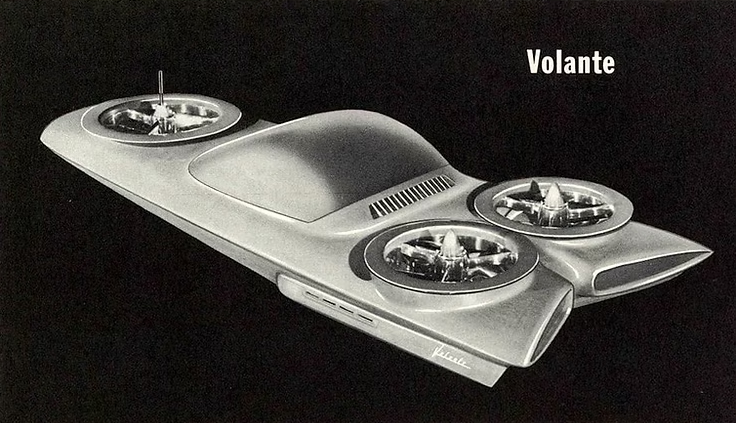Discovering new modes of transportation
Discovering brand-new modes of transportation with revised physics

Photo credits: unsplashed.com, story-cars.com/flying-car
What does it take to discover a brand-new mode of transportation? How can new answers be found while pursuing traditional directions? Seeking new insights compels a change to perspective. Where are new modes of short distance transportation and when will that technology be implemented? The leading fringe in theoretical physics presents a distinctively untraditional view.
Beginning in the 1930s, society was promised flying cars. What happened? There are two ways to answer the question: pessimistically or optimistically; either response leads to conjecture about societal behavior. Alternatively; the appropriate response is figuring out a way to make a vehicle float in air without a propulsive force.
Several of the previous CATTCC articles approach the topic of short distance transportation, let’s revisit and pickup from there. Beginning with a five-part series on levitation, it quickly leads to electrogravitics. This is the point where a reader who has little interest in theoretical physics can stop reading.
Electrogravitics is an unexplored pursuit in theoretical physics. In the phenomenal scientific genius days of the late 1800s and early 1900s, the theoretical physics community discovered electrogravitics. T. Townsend Brown was one of the early pioneers in the field.
The gravitycentral.space article explains the question: what is electrogravitics? As to relevance for a discussion about electrogravitics, it delves into theoretical physics fundamentals. To study the potential use of levitation as a method for transportation motion, this path leads to finding practicalities with the makeup of matter in theoretical physics. Electrogravitics is proposed as a foundational component to the theory of particle mass composition. Electrogravitics is similar to electromagnetics but identifies gravity as the component of subatomic electric fields, rather than an electromagnetic reaction. This leads to speculation that gravity is a subatomic process, rather than a product of mass. With this perspective, electrogravitics holds more validation than electromagnetics as the source of particle charge.
Since this perspective alters basic fundamentals of quantum physics, it explains why T. Townsend Brown and others have been discounted. Academia teaches the unanimous scientific opinion and pursues that perspective. Why pursue a perspective that academia ignores? There is validity to electrogravitics. The theory of electrogravitics coincides with Einstein’s theory of General Relativity. In the postulation that all mass within the Milky Way Galaxy is traveling at the speed of light, the statement holds that all mass is traveling in a unified direction, giving credence to the unified field theory that all mass is consistent in flow of direction. This gives merit to electrogravitics as a fundamental component as an action to mass.
Electrogravitics provides the explanation for gravity. Herein are some questions. How is it that that electrogravitics replaces electromagnetics? Looking at the difference between magnetics and gravity, magnetics is an action in electron orbits of elements in their composition of molecules. What is gravity? Is gravity the collection of mass? Or is it a process of matter?
A rock has more mass than a feather. Both are subjected to gravity. Mass is a collection of matter. Newton defined the laws of gravity 400 years ago to explain that a small rock and a big rock are both attracted to Earth which is a bigger rock. A feather is bound by the same principles dictated in Newton’s laws but is subjected to atmospheric interference regarding its speed of attraction to Earth’s gravitational influence.
What is the difference between electromagnetics as a fundamental principle to the makeup of matter and electrogravitics? With this question: what makes a magnet work? A magnet is the molecular combination of electron structure. Magnetic force is the action of electrons in the outer shell in ferrous materials. It is molecular action. Then, how can particles of non-ferrous elements hold electromagnetic properties, since magnetism is only an action of ferrous elements? How can particles with electromagnetic charge exist in subatomic properties and yet lose their magnetic existence in large quantities of element mass that aren't ferrous?
This presents potential validation to electrogravitics as a fundamental component to subatomic structure.
Now, consider gravity. According to Albert Einstein’s theory of relativity, his famous mathematical statement of energy is an explanation to his theory of relativity (E=MC^2). It reads: energy equals mass times the speed of light squared. His theory of relativity postulates that mass is traveling at light speed; as a constant. To clarify, Einstein’s theory of relativity suggests that the Milky Way Galaxy is traveling through the universe at the speed of light, in a gigantic path of a horseshoe configuration. His use of mass times light (MC) represents a constant. Energy is squaring of that constant, something beyond what perception perceives as normal (as an example: being on a train, unaffected by the movement outside the train-car).
In the pursuit to explain gravity, with consideration in agreement with Einstein’s theory of relativity, that the Milky Way Galaxy is traveling through the universe at the speed of light; the reality is: nothing is static. This declares that everything is frequency of motion. It completely nullifies the subatomic theories of opinion that orbits are elliptical.
An explanation for gravity is given in the article A Study in Gravity: gravity is a process of subatomic movement. With everything of perception being in motion as frequency, it suggests there is a definitive path to all matter. The path of all particles is analogous to a ribbon in an elliptical Mobius strip with twists in the ribbon. But, this elliptical Mobius ribbon with its defined twists is stretched out to a linear path in sync traveling at the speed of light. What is gravity? Gravity is the angular momentum of the twists, at the speed of light.
The orbital paths are circular in the sense of integral equilibrium; traveling at light speed. Dependent upon a two- or three-dimensional perspective, it would appear as a circle or orbital.
Foundation to theory
For many decades, the accepted theory of subatomic physics contends that subatomic particles, which comprise the structure of matter, hold values of electromagnetics which provide positive and negative charge. It is the theory of electrogravitics: this electrical charge is gravitational at the subatomic level.
Pursuing this perspective is the suggested direction for finding a way to use levitation as a method of motion for transportation.
Capturing the motion
There are several questions. is there legitimacy to Einstein’s postulation that relativity is: the Milky Way Galaxy is traveling at the speed of light? Is there a unified path of particle mass? This could enable the possibility to discover a methodology to capture levitation. The search begins with a natural action of simplicity, similar to the simplicity of a surfer riding a wave on the ocean.
The purpose in this direction is, again, finding a way to use levitation for transportation. In the article: What is levitation, it begins with more detailed questions. Where is it found? Does levitation really exist? Is it an action to a body as a whole or is it molecular action? It seems to be an action that takes place to a large mass as a whole. How does it happen? Levitation is another scientific mystery.
Conclusion
A new mode of transportation remains unknown. Researching the leading edge in fringe physics theory regarding the forgotten field of electrogravitics could bring answers. However levitation is discovered, it holds the future of short distance transportation.



